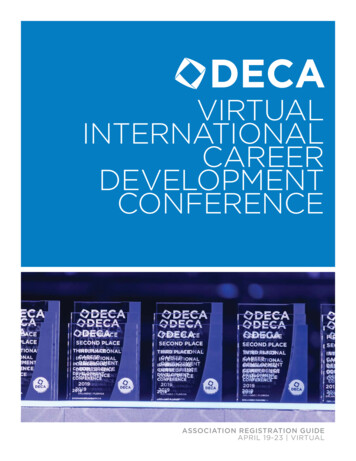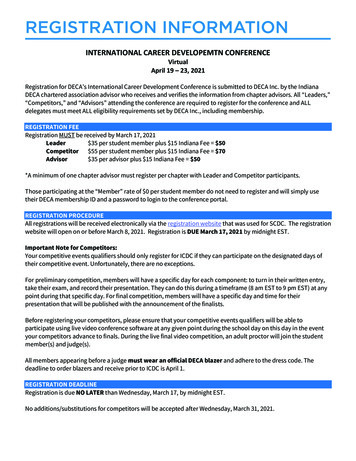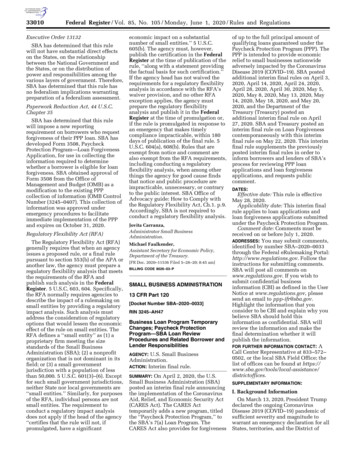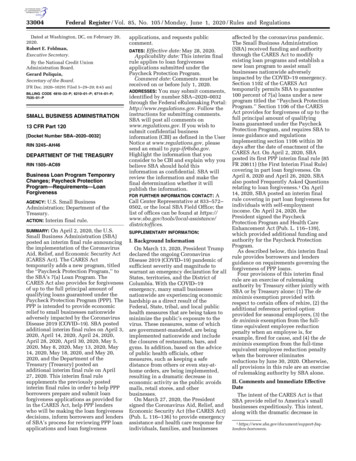
Transcription
International Journal of Business and Social ScienceVol. 4 No. 4; April 2013Corporate Social Responsibility and Sustainability: The New Bottom Line?Michael Fontaine, PhDAssociate Professor of MarketingNational Louis University850 Warrenville Rd, Lisle, IL 60532, USA.AbstractEach year, thousands of not-for-profit; social services; educational; health care; and environmentalorganizations make pitches to corporate entities to help partially or fully fund projects they deem are for thecommon good. And thousands are funded with the promise of some benefit in return to the funding corporation inquestion; usually having bottom line metrics. And those companies, who give their money and other resources,probably deem themselves as being socially responsible; but what about beyond the bottom line? What aboutsustainability? Corporate social responsibility (CSR), also called corporate conscience, corporate citizenship,social performance, or sustainable responsible business is a form of corporate self-regulation integrated into abusiness model. CSR policy functions as a built-in, self-regulating mechanism whereby business monitors andensures its active compliance with the spirit of the law, ethical standards, and international norms. The goal ofCSR is to embrace responsibility for the company’s actions and encourage a positive impact through its activitieson the environment, consumers, employees, communities, stakeholders and all other members of the publicsphere. For ages, corporations measured success primarily on profits; but do profits guarantee that thecorporation will still be around in the future? The thinking a little more than a decade ago, according to J.Ivancevich, P. Lorenzi, S. Skinner, and P. Crosby (1997), was that there was no specific standard that a firmfollowed since managers thought quite differently about what constituted social responsible behavior. Somemanagers viewed social responsibility as an obligation; others viewed it as a reactive situation; still othersconsidered proactive behavior to be the proper position.Factors Influencing CSRP. Mahajan, (2011), states that many factors and influences, including the following have led to increasingattention being devoted to CSR. GLOBALIZATION- coupled with focus on cross border trade, multinational enterprises and global supplychains is increasingly raising CSR concerns related to human resource management practices, environmentalprotection and health and safety amongst other things. GOVERNMENTAL AND INTER-GOVERNMENTAL BODIES- have developed compacts, declarations,guidelines, principles and other instruments that outline social reforms for acceptable conduct. ADVANCES IN COMMUNICATION TECHNOLOGY- is making it easier to tract corporate activities anddisseminates information about them. CONSUMERS AND INVESTORS- are showing increasing interest in supporting responsible business practiceand are demanding more information on how companies are addressing risks and opportunities related to socialand environment issues. NUMEROUS SERIOUS AND HIGH-PROFILE BREACHES OF CORPORATE ETHICS- have contributedto elevated public mistrust of corporations and highlighted the need for improved corporate governance. CITIZENS- in many countries are making it clear that corporations should meet standards of social andenvironmental care, no matter where they operate. INCREASING AWARENESS OF THE LIMITS OF GOVERNMENT LEGISLATURE- to regulate initiativesto effectively capture all the issues that CSR addresses.110
Centre for Promoting Ideas, USAwww.ijbssnet.comPurposeThe purpose of this paper is the examination of three (3) approaches to CSR and their impact on corporatesustainability. The three (3) approaches are: CSR as Value Creation; CSR as Risk Management; and CRS asCorporate Philanthropy.MethodologyA case study will be examined to determine the relationship and effectiveness of CSR. The case is Royal DutchShell Plc, a global energy and petrochemical company. And, the author will explore the convergence of CorporateSocial Responsibility (CSR) and Corporate Sustainability (CS) by examining some of Starbucks Corporation‘sPractices.IntroductionThere is today a growing perception among enterprises that sustainable business success and shareholder valuecannot be achieved solely through maximizing short-term profits but instead through market-oriented yetresponsible behavior, Mahajan (May 2011). Companies are aware that they can contribute to sustainabledevelopment by managing their operations in such a way as to enhance economic growth and increasecompetitiveness whilst ensuring environment protection and promoting social responsibility, including consumerinterest.Corporate social responsibility (―CSR‖) for short and also called corporate conscience, citizenship, socialperformance, or sustainable responsible business) is a form of corporate self-regulation integrated into a businessmodel. CSR policy functions as a built-in, self-regulating mechanism whereby business monitors and ensures itsactive compliance with the spirit of law, ethical standards, and international norms. The goal of CSR is toembrace responsibility for the company‘s actions and encourage a positive impact through its activities on theenvironment, consumers, employees, communities, stakeholders, and all other members of the public sphere.Furthermore, CSR-focused businesses would proactively promote the public interest by encouraging communitygrowth and development, and voluntarily eliminating practices that harm the public sphere, regardless of legality.CSR is the deliberate inclusion of public interest into corporate decision-making, and the honoring of a triplebottom line: people, planet, profit.Corporate social responsibility (CSR) is about how businesses align their values and behavior with theexpectations and needs of stakeholders – not just customers and investors, but also employees, suppliers,communities, regulators, special interest groups and society as a whole. CSR describes a company‘s commitmentto be accountable to its stakeholders. CSR demands that businesses manage the economic, social andenvironmental impacts of their operations to maximize the benefits and minimize the downsides.Professors Garret and Heal (Dec. 2004), inquired whether corporations should worry about their social impact.Or should they just go for profits and trust that everything else will fall into place? Apple, Intel and Microsoft didthis; in 20 years they created an industry affecting everyone in the developed world, changing lives andbusinesses, creating billions of dollars in value for the shareholders and tens of thousands of jobs for newemployees. They contributed massively to society, and did so in the cause of making money for theirshareholders. They illustrate well Adam Smith‘s classic remark that it is not from the benevolence of the butcher,the brewer, or the baker that we expect our dinner, but from their regard to their own interest. If companies makeproducts that consumers value and price them affordably, making money in the process, what is the need forcorporate social responsibility (CSR)?Tobacco companies sell a poison that is slow-acting and addictive, so they can actually make money while killingtheir customers, clearly a different case from the tech sector. What about auto and oil companies, which help usexperience freedom by means of personal mobility, while polluting the environment and changing the climate?What differentiates the tech sector from tobacco, oil and autos? To understand this we have to see when theinterests of corporations are fully aligned with those of society as a whole and when they are in conflict, and forthis according to Garret and Heal (Dec. 2004), we have to go beyond Adam Smith, to the concepts of private andsocial costs. Markets work well for society, aligning corporate and social interests, when a firm‘s private andsocial costs are the same, which is more or less the case with the tech sector.111
International Journal of Business and Social ScienceVol. 4 No. 4; April 2013But when corporate and social interests are not aligned, markets do not do such a good job, as in the case withtobacco and, to a lesser degree, oil and autos. This explains the conflict between corporations and society in thesesectors.PremiseWith the advent of the Enron, MCI WorldCom, and Arthur Anderson financial scandals a few years ago;corporate conduct and behavior is expected to be held to a higher standard and many of those expectations havemade their way into the very fabric of the corporate strategy.What is corporate social responsibility and how is it defined? According to McWilliams and Siegel (2001),corporate social responsibility (CSR) consists of actions that appear to further some social good beyond theinterest of the firm and that which is required by law. Katiinli, Gunay, and Biresselioglu (2011), stated thatalthough the concept has received growing attention from business scholars in recent years, Bowen provided thefirst modern definition of the concept as early as 1953, stating that businesses are responsible for their actionsbeyond profit and loss statements.The most often cited definition is Carroll‘s (1979) statement that ―The social responsibility of businessencompasses the economic, legal, ethical, and discretionary expectations that society has of organizations at agiven point in time.‖ Hence, there is consensus on its broad definition and every business now makes somedegree of effort to engage CSR projects. In addition to business, consumers and governmental organizations areincreasingly focusing their attention on CSR (Konrad et. al, 2006). However, there are different views regardingthe exact meaning of CSR.Other DefinitionsThe World Business Council for Sustainable Development in its publication ―Making Good Business‖ by LordHolme and Richard Watts used the following definition. ―Corporate Social Responsibility is the continuingcommitment by business to behave ethically and contribute to economic development while improving the qualityof life of the workforce and their families as well as of the local community and society at large‖. The samereport gave some evidence of the different perceptions of what this should mean from a number of differentsocieties across the world. Definitions as different as: ―CSR is about capacity building for sustainablelivelihoods. It respects cultural differences and finds the business opportunities in building the skills ofemployees, the community and the government‖ from Ghana, through to ―CSR is about business giving back tosociety‖ from the Philippines. For instance, the CSR definition used by Business for Social Responsibility is:―Operating a business in a manner that meets or exceeds the ethical, legal, commercial and public expectationsthat society has of business‖. On the other hand, the European Commission hedges its bets with two definitionswrapped into one: ―A concept whereby companies decide voluntarily to contribute to a better society and acleaner environment—a concept whereby companies integrate social and environmental concerns in their businessoperation and in their interaction with their stakeholders on a voluntary basis‖.The term Corporate Social Responsibility refers to the concept of business being accountable for how it managesthe impact of the processes on stakeholders and take responsibility for producing a positive effect on the society.CSR has been defined as the continuing commitment by business to behave properly, fairly and responsibly andcontribute to economic development while improving the life of the workers and their families as well as the localcommunity and society at large.Some Management ViewsCorporate Social Responsibility as an ObligationAccording to J. Ivancevich, P. Lorenzi, S. Skinner, and P. Crosby (1997), corporate social responsibility as asocial obligation holds the view that a corporation engages in socially responsible behavior when it pursues profitonly within the constraints of law. Because society supports business by allowing it to exist, business is obligatedto repay society by making profits. Thus, according to this view, legal behavior in pursuit of profit is sociallyresponsible behavior, and any behavior that is illegal or is not in pursuit of profit is socially irresponsible. Thisview is particularly associated with economist Milton Friedman (1970) and others who believe that society createsfirms to pursue two primary purposes—to produce goods and services efficiently and to maximize profits.112
Centre for Promoting Ideas, USAwww.ijbssnet.comAs Friedman has stated, ―There is one and only one social responsibility of business—to use its resources andengage in activities designed to increase its profits so long as it stays within the rules of the game, which is to say,engages in open and free competition without deception or fraud.Supportive Arguments Proponents assert, businesses are accountable to their shareholders, the owners of the corporation. Thus,management‘s sole responsibility is to serve the shareholder‘s interest by managing the company to produceprofits from which shareholders benefit. Socially responsible activities such as social improvement programs should be determined by law, by publicpolicy, and by the actions and contributions of private individuals. As representatives of the people, thegovernment (via legislation and allocation of tax revenues), is best equipped to determine the nature of socialimprovements and to realize those improvements in society. Business contributes in this regard by payingtaxes to the government, which rightfully determines how they should be spent. If management allocates profits to social improvement activities, it is abusing its authority. As Friedman(1970), notes, these actions amount to taxation without representation. Because managers are not electedpublic officials, they are also taking actions that affect society without being accountable to society.Managers are not trained to make noneconomic decisions. These actions by managers may hurt society. In this sense, the financial costs of social activities may overtime cause the price of the company‘s goods and services to increase and customers must pay the bill. Thus,managers have acted in a manner contrary to the interests of the customers and ultimately, the shareholders.Corporate Social Responsibility as a Social ReactionAccording to this view, socially responsible behaviors are anticipatory and preventative, rather than reactive andrestorative. The term social responsiveness has become widely used in recent years to refer to actions that exceedsocial obligation and social reaction. A socially responsive corporation actively seeks solutions to socialproblems. Progressive managers, according to this view, apply corporate skills and resources to every problem—from run-down housing to youth employment and from local schools to small-business job creation, Ivancevich,Lorenzi, Skinner, and Crosby (1997).Some ApproachesP. Mahajan (May 2011), stated that some commentators have identified a difference between the ContinentalEuropean and the Anglo-Saxon approaches to CSR. And even with Europe the discussion about CSR is veryheterogeneous. An approach for CSR that is becoming more widely accepted is the community-based approach.In this approach, corporations work with local communities to better themselves. A more common approach ofCSR is Philanthropy. This includes monetary donations and aid given to local organizations and impoverishedcommunities in developing countries. Another approach to CSR is to incorporate the CSR strategy directly intothe business strategy of an organization. For instance, procurement of Fair Trade tea and coffee has been adoptedby various businesses including KPMG.Fioravante, (Oct. 2010), noted that considering the essential rudiments of a strategic marketing plan, firms exploreinternal and external means. Corporate philanthropy is quickly becoming a viable strategic option in thedevelopment of marketing strategies. Firms looking to further brand development, market recognition, andenhanced customer perceptions can integrate philanthropic initiatives throughout the planning process.Implementing these initiatives in a complementary fashion to the overall business plan brings forth the latency ofcreating a distinctive competitive advantage for those who choose to do so. This marketing phenomenon providesa cogent social and economic approach to furthering the myriad of business agendas necessary to have marketsustainability.Corporate philanthropy is a phenomenon which associates the business sector with the social sector. Socialhistorians and researchers alike as a subset of a larger corporate social responsibility (CSR) subject, philanthropyprovides an opportunity for corporations to establish an ethical and moral mantra within the organization (Gan,2006; Madrigal & Boush, 2008).113
International Journal of Business and Social ScienceVol. 4 No. 4; April 2013An organization is comprised of people who assume the responsibility of cultivating and maintaining a culturesupportive of philanthropy and its rage of objectives. Success philanthropy – achieving the goal is as vital to anorganization as the ―core business‖ (Bruch & Walter, 2005).Philanthropic initiatives are complex and thus need to be developed, communicated, implemented, monitored, andlastly sustained, in order to guarantee its viability as a strategic tool.Understanding the potential impact of philanthropy in all of its forms enables a corporation to alter its valueproposition and ultimately shape the manner in which it employs this phenomenon in the business strategy.Strategic marketing has a myriad of meanings and applications across industries. Philanthropy can add altruisticand capitalistic contribution to an organization. By analyzing how corporations use philanthropy for strategicmarketing purposes, conclusions are possible that are drawn on the intrinsic value beyond the ―feel good‖ andtowards a business growth driver. Much attention has been paid to CSR, corporate financial performance,corporate reputation, and the intersections of ethics and consumer perceptions. The gap to address and theory toadvance focuses on how a corporation can use philanthropic initiatives to validate, differentiate, and makedistinctive their strategic marketing process. Corporate philanthropy in the eyes of this researcher has meaningfulvalue to the organization in a raison d‘être sense, provided there is an equilibrium existence of an ethical andeconomic business construct.Creating Shared ValueThere is another approach that is gaining increasing corporate responsibility interest. This is called CreatingShared Value, or CSV. The shared value model is based on the idea that corporate success and social welfare areinterdependent. A business needs a healthy, educated workforce, sustainable resources and adept government tocompete effectively. For society to thrive, profitable and competitive businesses must be developed andsupported to create income, wealth, tax revenues, and opportunities for philanthropy. CSV received globalattention in the Harvard Business Review article Strategy & Society: The Link between Competitive Advantageand Corporate Social Responsibility [1] by Michael E. Porter, a leading authority on competitive strategy andhead of the Institute for Strategy and Competitiveness at Harvard Business School; and Mark R. Kramer, SeniorFellow at the Kennedy School at Harvard University and co-founder of FSG Social Impact Advisors. The articleprovides insights and relevant examples of companies that have developed deep linkages between their businessstrategies and corporate social responsibility. Many approaches to CSR pit businesses against society,emphasizing the costs and limitations of compliance with externally imposed social and environmental standards.CSV acknowledges trade-offs between short-term profitability and social or environmental goals, but focusesmore on the opportunities for competitive advantage from building a social value proposition into corporatestrategy.Many companies use the strategy of benchmarking to compete within their respective industries in CSR policy,implementation, and effectiveness. Benchmarking involves reviewing competitor CSR initiatives, as well asmeasuring and evaluating the impact that those policies have on society and the environment, and how customersperceive competitor CSR strategy.Corporate Social Responsibility as Risk ManagementManaging risk is a central part of many corporate strategies. Reputations that take decades to build up can beruined in hours through incidents such as corruption, scandals, or environmental accidents. These can also drawunwanted attention from regulator, courts, governments, and media. Building a genuine culture of ‘doing theright thing‘ within a corporation can offset these risks.McPeak (Fall 2011), acknowledges that the emphasis on corporate social responsibility has been visible since1984 when many multinational firms were formed and the term ―stakeholders‖ clearly referred to thoseindividuals and organizations that the firm‘s activities impacted (Freeman, 1984). CSR accurately consists of 4elements: ―moral obligation‖ or duty to act responsibly as a good corporate citizen; ―sustainability‖ generallydefined as meeting the needs of the present without compromising the ability of future generations to meet theirown needs; the company‘s needs for ―license to operate‖ as implicit or explicit approval from the hostgovernment, communities and stakeholders; and the ―reputation‖ where CSR firms aimed to improve images,strengthen brands and increase values, (Danko et al, 2008, p. 42; Porter & Kramer, 2006, p.81).114
Centre for Promoting Ideas, USAwww.ijbssnet.comAfter advocating this opinion, the priority of business and the solid position of financial performance have beenre-thought by the public. The main argument for companies‘ emphasis on sustainability is that CSR is a riskmanagement tool to manage financial risk, reputation risk, environmental risk, and supply chain risk.Accordingly, CSR shareholders believe that CSR is positively related to financial performance. The underlyingassumption is that a firm which is socially responsible could present a positive image to customers and bettercustomer satisfactions produces more financial benefits, (Luo, and Bhattacharya, 2006). However, whenmultinational corporations make substantial investments in an attempt to be responsible to society and localcommunities, does this action really add value to the firm‘s financial performance or is this just a fad thateveryone pursues? Firms need to be responsible to stakeholders but how far is this from the bottom line tostockholders, one of the more significant stakeholders? These questions continue to be debated into the present.Some historical studies show that CSR has a negative relationship with business risks, systematically andunsystematically, which means that CSR can help firms reduce business risks, (Kim, 2010).However, a more recent study of the role of intangible assets of 599 companies across 28 countries shows thatthere is merely an indirect relationship but not a direct relationship between corporate responsibility and financialperformance, (Jordi, Josep, Sandra, 2010) Interestingly, some practitioners think this research finding is flawed.For example, they question the time frame associated with evaluating the financial performance. Normally CSRefforts cannot transfer into financial performance until 3 to 5 years have passed. So the relationship between CSRand financial performance is really a long-term concept. In addition, a CSR leader, Shannon Schuyler of PriceWaterhouse Coopers explained that CSR and financial performance have no correlation because CSR is oftenmade a part of the company‘s strategy but that there is not an appropriate plan for implementation of the strategy,(Cheney). Followed by this, B. Giacomo and M. Giacomo suggested that the best way to pursue CSR must bepart of the firm‘s strategy and they further explained this by comparing Strategic CSR and Responsive CSR, (B.Giacomo and M. Giacomo, 2010). They also found that different types of CSR have different impacts onfinancial performance.The Models: An IllustrationAccording to Mosgaller, (Jan. 2012), the three P‘s of performance are essential for moving social responsibilityfrom talking point and platitude to a daily practice in the organizations. The first P is for purpose. Dr. W.Edwards Deming put constancy of purpose first in his list of 14 points.115
International Journal of Business and Social ScienceVol. 4 No. 4; April 2013People who work in any organization espousing the value of social responsibility need to know why an aspect ofsocial responsibility is worthy of the organization‘s attention. The second P is for process. Well-definedprocesses for executing social responsibility commitments require a disciplined method for rolling up theorganization‘s collective sleeves and translating the purpose into action. The third P is for people.If creating a culture where social responsibility is more than a passing fad, people have to engage in defining thepurpose of their efforts. The capacity of organizations to thoughtfully use the three P‘s as a simple, powerfulframework for systematically taking their commitment to social responsibility and integrating it into daily work isessential to long-term sustainability.Case StudyThis study explored whether CSR is linked to profitability. It bases its measurement of CSR on content analysisof the annual reports of Royal Dutch Shell Plc. This research used a case study approach and analyzed data fromseveral key performance indicators reported in Royal Dutch Shell Plc‘s sustainability report and annual accountover a 5-year period; 2001-2005. Results indicate that socially responsible corporate performance can beassociated with profitability. Although this study did not explore the direction of the causal connections,nevertheless, the findings indicate that CSR is positively related to better financial performance (profitability) andthis relationship is statistically significant.The Royal Dutch Shell Plc is chosen as it is a global energy and petrochemical company, operating in more than145 countries and employing approximately 119,000 people (Shell 2005). Royal Dutch Shell is one of the biggestin the oil sector and also listed as the third top company in the world. Using extensive data over a period of 5years; this study explores and test the sign of the relationship between CSR and profitability with regards to CSRpractices and policies of Royal Dutch Shell Plc.Previous ResearchEmpirical studies of the relationship between CSR and financial performance comprise essentially two types. Thefirst, according to Ekatah, Samy, Bampton, and Halabi (2011), uses the event study methodology to assess theshort-run financial impact (abnormal returns) when firms engage in either socially responsible acts. The results ofthese studies have been mixed.The second type of study examines the relationship between some measure of corporate social performance (CSP)and measures of long-term financial performance, by using accounting or financial measures of profitability. Thestudies have also produced mixed results.Yet another view, perhaps the most intuition pleasing, is put forth by Bowman and Haire (1975) who argue thatthe relationship is manifested by an inverted U-shaped curve, which states that more CSR to a point is good.Thereafter, using the language of economics, decreasing marginal returns set in. Generally profits initially risewith input, reach a peak and then decline.MethodologyThis study bases its measurement of CSR on content analysis of the annual reports of Royal Dutch Plc. Thismethod is similar to that used by Bowman and Haire (1975), but the difference is that this research used a casestudy approach and would be analyzing data from several key performance indicator reported in Royal DutchSchell Plc‘s sustainability report and annual account over a 5 year period.Variables that are tested for the relationship between CSR and profitability are profitability; CSR; Social KeyPerformance Indicators (KPI); and Environmental Key Performance Indicators (KPI). From the analysis, 3research questions are developed.Q1: Is there a relationship between increase in revenue in the last 5 years and CSR KPI of Royal Dutch ShellPlc?Q2: Is there a relationship between increase in net-income and CSR KPI of Royal Dutch Shell Plc?Q3: Is there a relationship between in Earnings Per Share (EPS) and CSR KPI of Royal Dutch Shell Plc?116
Centre for Promoting Ideas, USAwww.ijbssnet.comQ1: Increases in revenue were steady over the 5 year period which the authors attributed to the involvement ofCSR activities by Royal Dutch Shell Plc. Although there are arguments by some proponents of CSR who say thatRoyal Dutch Shell Plc is not living up to its promise of environmental and social responsibility.Q2: Table 6 (See PDF) shows the trend of the Net-income and CSR KPI of Royal Dutch Shell Plc between theyears 2001 and 2005. The table shows an increase for each year except 2002 when the company saw a drop in theNet-income value by 2 percent. This drop was a result of the September 11 terrorist attacks on the US and thegrowing concerns for economic and political climate caused by the threat of terrorism.Q3: The last research question sought to establish a relationship between increase in Earnings per Share and CSRKPI‘s of Royal Dutch Shell Plc. Summarily a positive relationship exists between increase in Earnings per Shareand CS.According to Ekatah, Samy, Bampton, and Halabi (2011), most studies focus on profits as a cause of CSR, but thefocus on profits as a cause, limits the potential for insight into the determinants of CSR for two reasons (McGuireet al., 198
The World Business Council for Sustainable Development in its publication ―Making Good Business‖ by Lord Holme and Richard Watts used the following definition. ―Corporate Social Responsibility is the continuing commitment by business to behave ethically and contr











